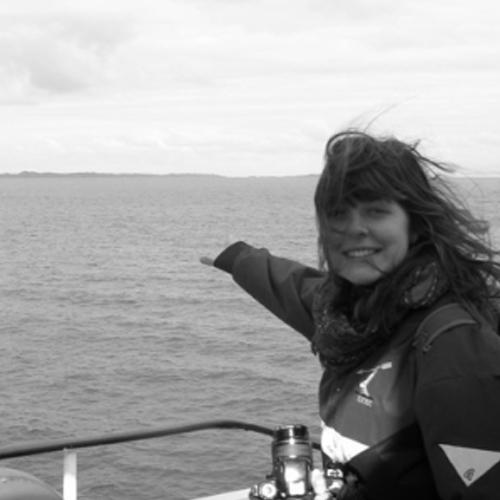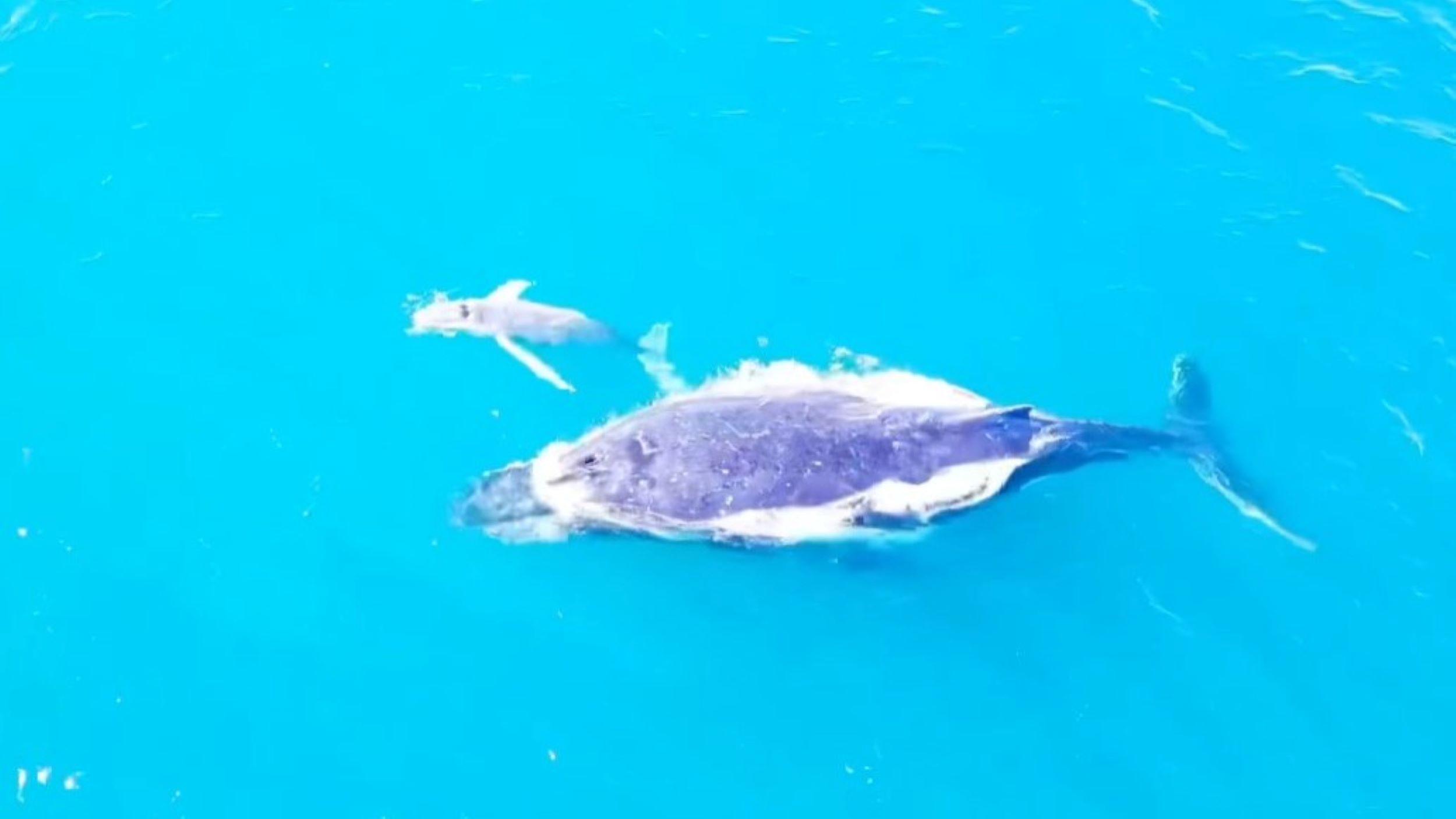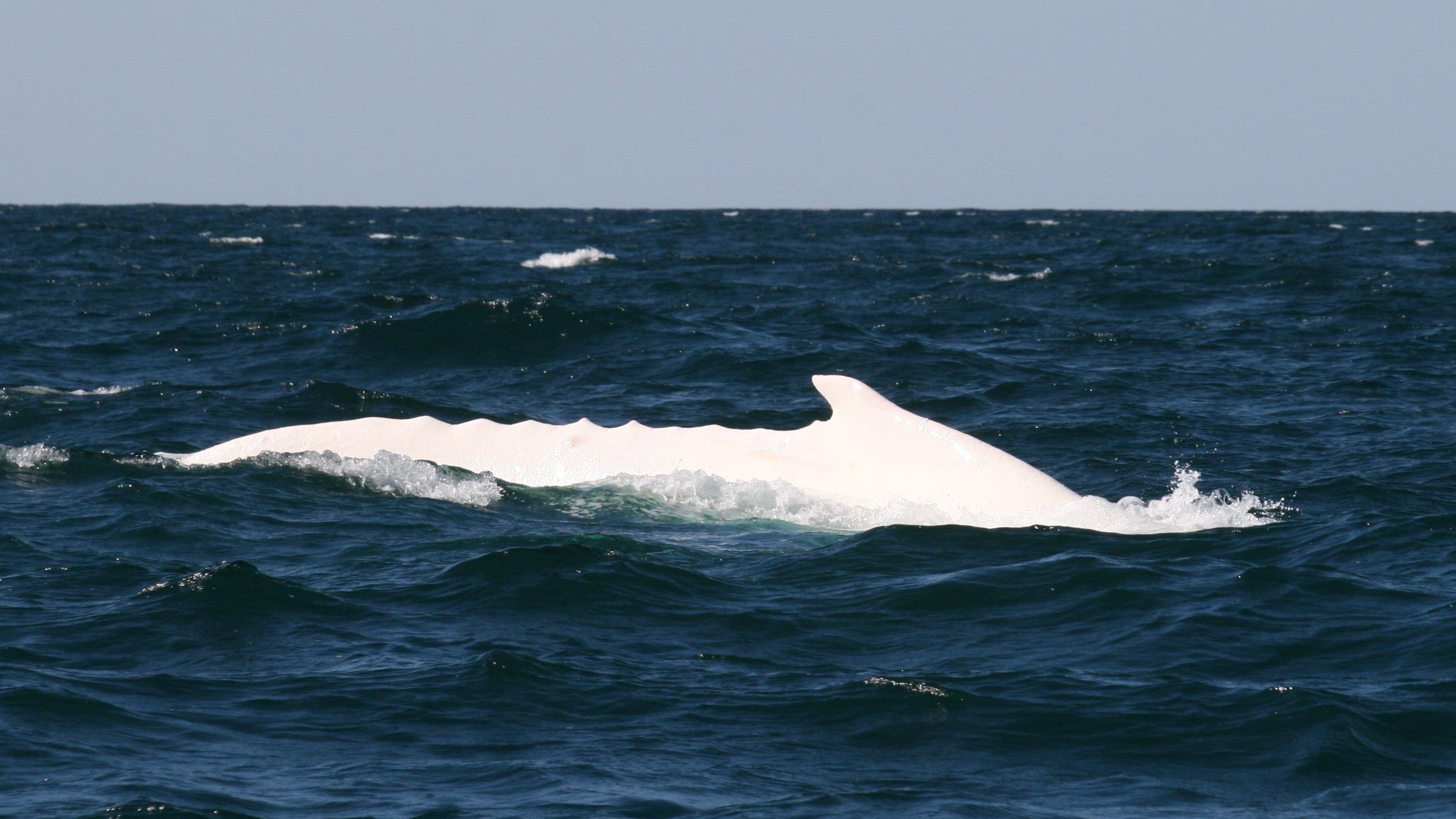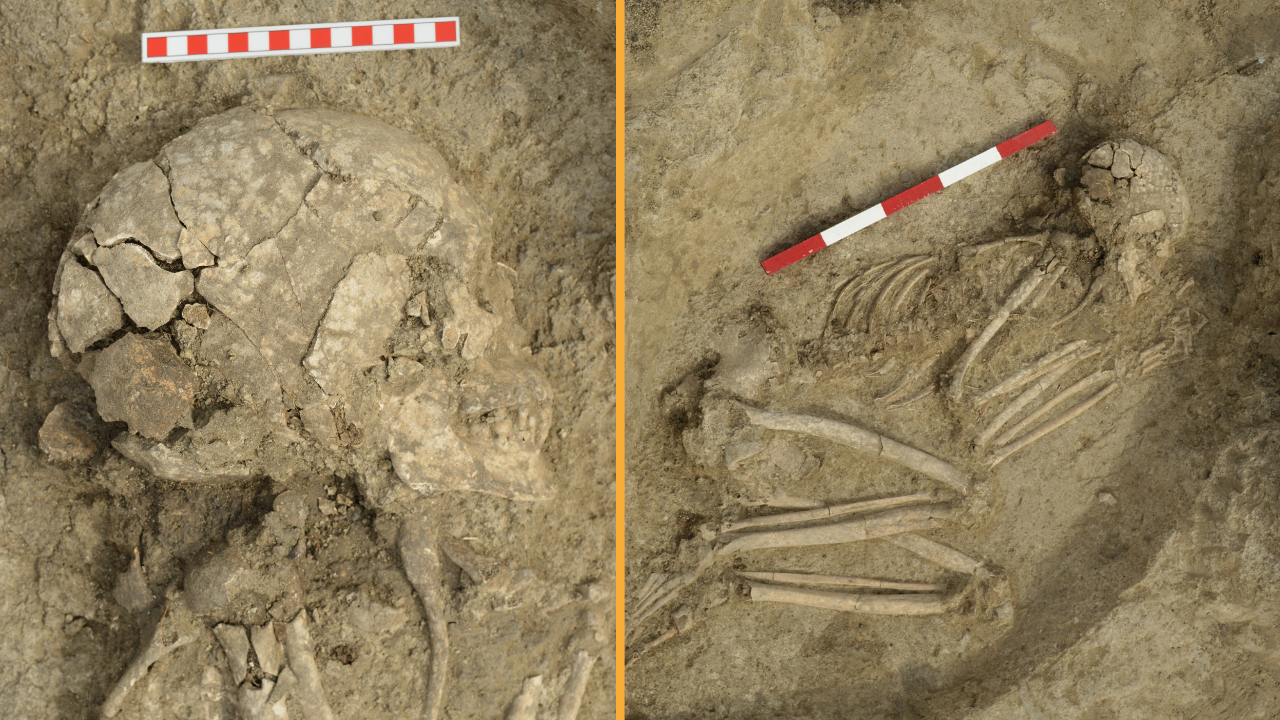Baby Moby Dick? Rare white humpback whale calf filmed off Australia
The latest footage follows two other sightings of all-white, newborn humpback calves — but experts aren't convinced these whales are albino like the famous Migaloo.
A pearly white baby humpback whale has been filmed off the coast of Australia, prompting speculation about whether it is an extraordinarily rare albino whale. Others also wondered whether the calf could be the offspring of "Migaloo", a completely white whale like the mythical Moby Dick.
Drone operator Jaydyn Mathewson spied the pale whale in late July, gliding alongside its mother through the turquoise waters off the northern tip of New South Wales. Humpback whales migrate to this stretch of eastern Australia’s coast between June and August to mate and give birth, having traveled north from the rich feeding grounds of Antarctica, where they return between September and November.
Humpback whales (Megaptera novaeangliae) are almost completely dark gray to black and typically feature white blotches only on their bellies, but in the video, the calf's milky-white tail and fins can be seen gleaming in the sunlight.
However, experts are hesitant to attribute the calf's features to albinism. This rare genetic condition is caused by a recessive gene which disrupts the cells’ ability to make melanin, the substance that produces pigmentation in skin, hair, and eyes. This results in pale skin and pinkish eyes.
Related: Whale sighting in Australia hints at 'extremely unusual' interspecies adoption
While rarely documented, lighter hues aren't unheard of in newborn whales, Wally Franklin, a cetacean research and marine scientist at The Oceania Project, a non-profit dedicated to the research and conservation of dolphins and whales, told Live Science. "They are born with a down covering which appears very light and whitish in the light and as a result they are mistakenly considered to be albino," he said. "The initial down covering dissipates usually within a week and the normal black and white pigmentation is established."
Superb footage of newborn calf, likely days old… Footage obtained by Isaiah Hinds off Lennox Head… Congratulations Isaiah, priceless, beautiful footage… hoping to sight Mum and calf during Hervey Bay season in September! pic.twitter.com/1v2NNoq2p0July 12, 2023
Photographers also captured footage of two other baby "Moby Dicks" off the state of New South Wales in recent weeks. One was spied near Burrewarra Point at the southern tip of the state by a drone in late June, almost seeming to glow beneath the waves. The other was spotted in mid-July at Lennox Head in the north, where it was filmed sidling up to its mother until it slipped out of view beneath her protective belly.
Get the world’s most fascinating discoveries delivered straight to your inbox.
Determining whether these youngsters have albino traits would require observation over time as well as skin samples. But whales confirmed to have albinism are extremely rare. "The reality is that the only albino in the eastern Australian humpback whale population is the very well known 'Migaloo,'" Franklin said.
Migaloo, whose name means "White Fella" in several Australian Aboriginal languages, was first spotted in 1991 off the country's west coast, which falls along another humpback whale migration route from Antarctica. It took almost 15 years to confirm his albino status from sloughed off skin cells, which showed he has the genetic hallmark of albinism.
Albinism can increase sensitivity to sunlight and cold and make creatures more vulnerable to predators. Yet Migaloo has survived to adulthood and is a healthy whale. "The observational evidence is that he gets along with other humpbacks in a very normal way," Franklin said.
Migaloo hasn't been spotted since 2020, though the sighting of a pale adult humpback off Australia's Queensland coast earlier this year raised hopes that it could be him. Even so, for the white calves to be his, Migaloo would need to have mated with a female who also carried the rare mutation for albinism.
What's more likely, Franklin said, is that the sightings are the result of a rare good news environmental story: conservation has led to the resurgence of the Australian humpback population in the last 60 years, from a few hundred in the 1960s to tens of thousands today. This means there’s an uptick in the number of young being born in the calving waters off of eastern Australia.
"Hence there are increased sightings of newborns occurring along the coast," Franklin said. "With so much interest in the humpback migration, we are both sighting and receiving increased coverage of these beautiful light colored new born calves, which is wonderful."

Emma Bryce is a London-based freelance journalist who writes primarily about the environment, conservation and climate change. She has written for The Guardian, Wired Magazine, TED Ed, Anthropocene, China Dialogue, and Yale e360 among others, and has masters degree in science, health, and environmental reporting from New York University. Emma has been awarded reporting grants from the European Journalism Centre, and in 2016 received an International Reporting Project fellowship to attend the COP22 climate conference in Morocco.




